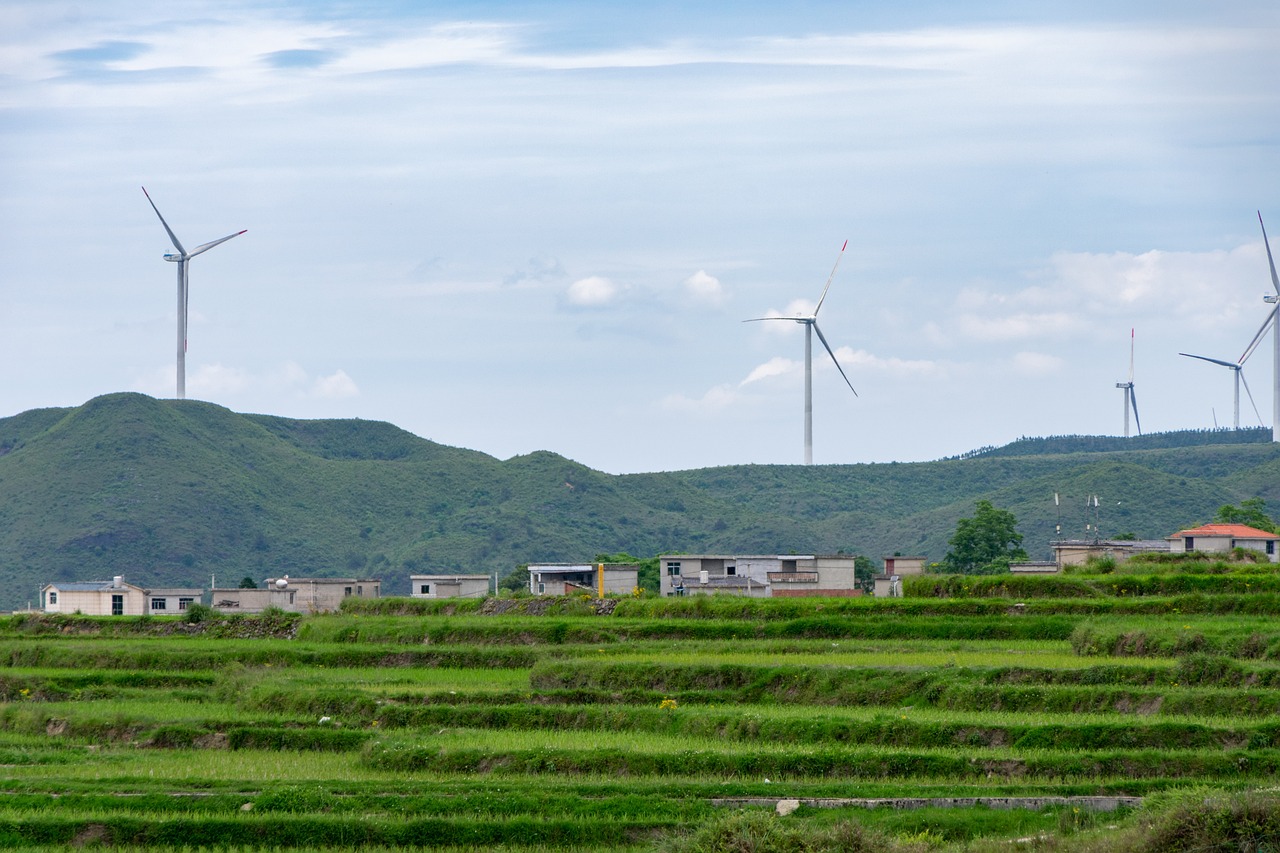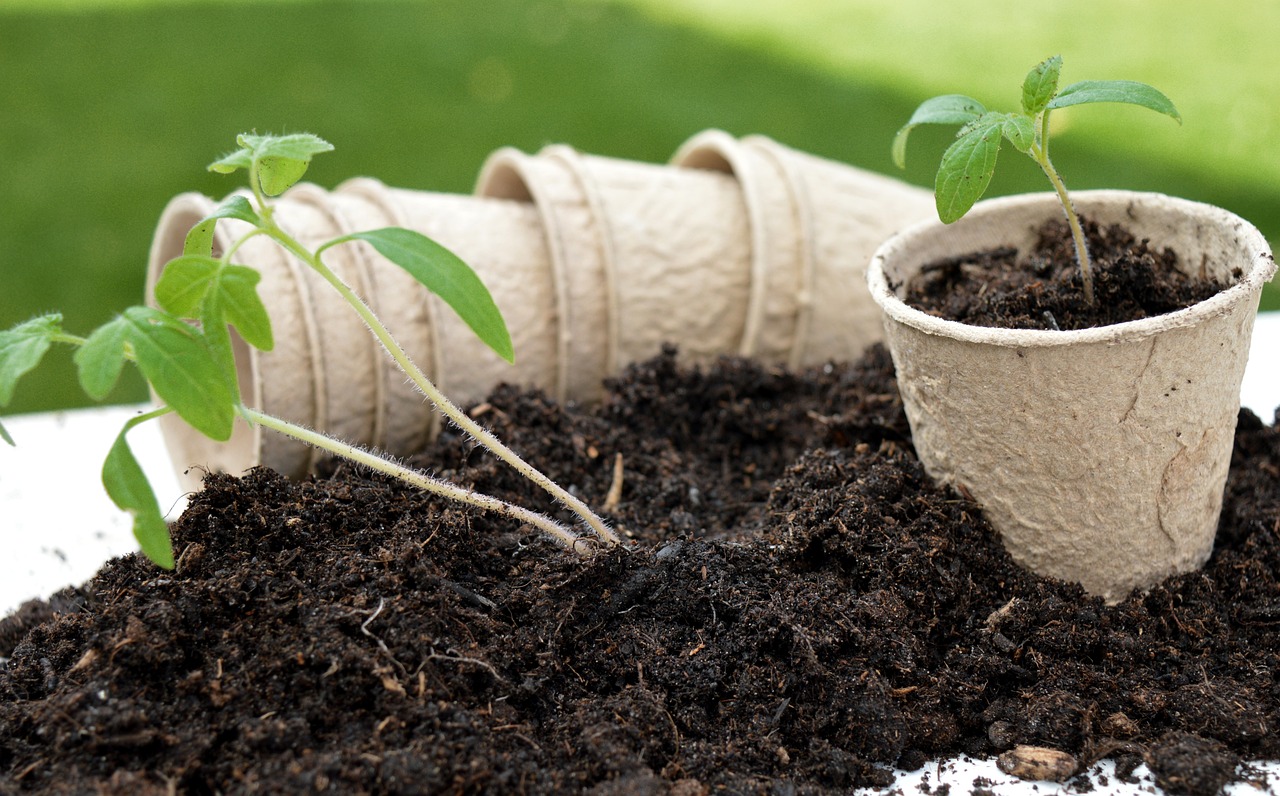Sustainable Quilting: Making Use of Fabric Scraps
In a world increasingly aware of environmental issues, sustainable quilting emerges as a creative and fulfilling way to indulge in this beloved craft while minimizing waste. Have you ever thought about how many beautiful quilts could be made from the fabric scraps that often accumulate in our sewing rooms? Instead of tossing those leftover pieces into the trash, why not transform them into stunning quilts that tell a story? This article explores the art of sustainable quilting, focusing on innovative ways to utilize fabric scraps, reduce waste, and foster creativity in quilting projects.
Understanding the environmental impact of quilting helps crafters make informed choices about materials and practices, promoting a more sustainable approach to this beloved hobby. Quilting has traditionally involved a lot of fabric, and while it’s a beautiful way to express creativity, it can also lead to significant waste. By adopting more sustainable practices, we can keep our craft alive without harming the planet. Imagine every quilt you create not only warming your home but also contributing to a healthier environment. Isn’t that a goal worth striving for?
Exploring imaginative projects that transform fabric scraps into beautiful quilts is an exciting journey. With a little creativity, you can ensure that no piece goes to waste while enhancing your resourcefulness. For instance, you might consider creating a patchwork quilt where every square tells a story. You could use scraps from your children's old clothes, remnants from previous projects, or even fabric gifted by friends. The possibilities are endless!
Patchwork quilting offers a perfect opportunity to repurpose fabric scraps into stunning designs. Each piece can represent a memory or a moment in time, making your quilt a unique tapestry of your life. The beauty of patchwork lies in its flexibility; you can mix and match colors and patterns to create something truly special. It’s like assembling a puzzle where every piece fits perfectly, creating a beautiful picture that reflects your personal journey.
Learning how to effectively coordinate colors can elevate scrap quilts, helping quilters achieve visually appealing results while using various fabric remnants. Consider using a color wheel to find complementary colors or stick to a specific palette for a cohesive look. A well-coordinated quilt can be as striking as a piece of art hanging on your wall!
Incorporating different textures and patterns adds depth and interest to scrap quilts. Think about how a soft cotton can contrast with a shiny satin or a rugged denim. This combination not only makes your quilt visually appealing but also tactilely engaging. Don’t be afraid to experiment; sometimes, the most unexpected combinations yield the most delightful results!
The quilt-as-you-go technique allows quilters to work with smaller sections, making it easier to manage fabric scraps and create intricate designs without overwhelming complexity. This method is perfect for beginners or those who might feel intimidated by larger projects. It’s like assembling a jigsaw puzzle one piece at a time, allowing you to enjoy the process without feeling rushed.
Choosing sustainable materials is crucial for eco-conscious quilters. Exploring organic fabrics and recycled options can significantly reduce the environmental footprint of quilting projects. By opting for fabrics that are produced without harmful chemicals, you not only protect the planet but also ensure that your quilts are safe for you and your loved ones.
Understanding the differences between organic cotton and conventional fabrics helps quilters make sustainable choices that benefit both the environment and their health. Organic cotton is grown without synthetic pesticides and fertilizers, making it a healthier choice for both the planet and the people who work with it. Why not choose fabrics that align with your values? It’s a simple way to make a big impact!
Transforming old clothing into quilt pieces is a fantastic way to repurpose fabric. Not only does this practice create meaningful quilts, but it also reduces textile waste in landfills. Imagine turning a beloved shirt or a pair of jeans into a cozy quilt that keeps memories alive. Upcycling is not just sustainable; it’s a way to celebrate the past while creating something new.
Creating a well-organized scrap stash encourages quilters to utilize leftover fabrics more efficiently, fostering creativity and sustainability in their quilting endeavors. By taking the time to sort and store your scraps, you’ll find that you’re more likely to reach for them in your next project. It’s like having a treasure chest of inspiration at your fingertips!
Effective sorting and storage methods help quilters easily access their fabric scraps, making it simpler to find the perfect piece for their next project. Consider using clear bins or labeled boxes to categorize your scraps by color, size, or fabric type. This way, you can quickly find what you need without rummaging through a chaotic pile of fabric.
Engaging with the quilting community through scrap sharing and swapping can inspire new ideas and foster connections while promoting sustainability in the craft. Joining local quilting groups or online forums can open doors to new friendships and collaborative projects. Plus, sharing your scraps means someone else can create something beautiful, reducing waste even further.
- What is sustainable quilting? Sustainable quilting focuses on using eco-friendly materials and practices to reduce waste while creating beautiful quilts.
- How can I start using fabric scraps? Begin by collecting scraps from previous projects, old clothing, or fabric remnants. Experiment with patchwork techniques to create unique designs.
- What are some eco-friendly materials I can use? Look for organic cotton, recycled fabrics, and upcycled materials to reduce your environmental impact.
- How do I store my fabric scraps? Use labeled bins or boxes to sort scraps by color or size, making them easily accessible for future projects.

The Importance of Sustainability in Quilting
In today's world, where environmental concerns are at the forefront of our minds, the importance of sustainability in quilting cannot be overstated. Quilting, a cherished craft that has been passed down through generations, can also contribute to environmental degradation if not approached thoughtfully. By understanding the environmental impact of our materials and practices, we can make informed choices that promote a more sustainable approach to this beloved hobby.
Many quilters may not realize that traditional quilting practices often involve significant waste. From fabric scraps to unused materials, the quilting process can generate a considerable amount of leftover fabric. However, by embracing sustainable practices, we can transform this waste into opportunities for creativity and resourcefulness. Imagine the thrill of turning what might have been discarded into a beautiful quilt that tells a story! This shift in mindset not only benefits the planet but also enriches our crafting experience.
One of the primary ways to foster sustainability in quilting is by selecting eco-friendly materials. For example, opting for organic cotton or recycled fabrics can significantly reduce the environmental footprint of our projects. Organic cotton is grown without harmful pesticides or fertilizers, making it a healthier choice for both the planet and the quilter. On the other hand, recycled fabrics breathe new life into materials that would otherwise end up in landfills. By choosing these sustainable options, quilters can create stunning pieces while honoring their commitment to the environment.
Additionally, understanding the lifecycle of our materials is crucial. When we purchase fabric, we should consider not just the initial cost but also the long-term effects on the environment. For instance, conventional fabrics often involve resource-intensive processes that contribute to pollution and waste. By being mindful of our choices, we can support practices that prioritize sustainability and ethical production.
In conclusion, sustainability in quilting is not just a trend; it's a necessary evolution of our craft. By making conscious decisions about materials, repurposing scraps, and engaging with the quilting community, we can create beautiful pieces that reflect our values. So, the next time you sit down to quilt, ask yourself: How can I make this project more sustainable? The answers may surprise you and lead to a more fulfilling quilting journey.

Creative Ways to Use Fabric Scraps
When it comes to quilting, fabric scraps can often feel like a burden, but they are actually a treasure trove of potential! Imagine diving into a world where every little piece of fabric tells a story and contributes to a unique creation. Utilizing fabric scraps not only helps in reducing waste but also sparks creativity in ways you might never have imagined. Let’s explore some innovative projects that will transform those leftover bits into stunning quilts that you can be proud of!
One of the most exciting ways to use fabric scraps is by creating patchwork quilts. This timeless technique allows you to piece together various scraps into a cohesive design, turning what could be seen as disjointed remnants into a beautiful masterpiece. Each square can be a different color or pattern, reflecting your personality and style. The beauty of patchwork lies in its ability to encapsulate memories—perhaps a square from your favorite old shirt or a piece of fabric from a beloved friend’s project. It’s like a quilted diary of your life!
Another creative approach is to explore the quilt-as-you-go method. This technique is particularly appealing for those who may feel overwhelmed by the idea of tackling a large quilt all at once. By working on smaller sections, you can manage your fabric scraps more effectively while still achieving intricate and beautiful designs. Each section can be quilted individually, allowing you to experiment with different stitches and patterns without the pressure of completing an entire quilt in one go.
Don’t forget about the power of color coordination. Mixing and matching colors can elevate your scrap quilts from average to extraordinary. When working with scraps, consider creating a color palette that resonates with you. You might choose to stick to a monochromatic scheme for a sophisticated look or go for a vibrant rainbow effect for something more playful. The key is to allow your personal style to shine through, making your quilt a true reflection of who you are.
Furthermore, incorporating various textures and patterns adds depth to your quilts. Imagine the tactile experience of running your hands over a quilt that combines soft flannel, crisp cotton, and luxurious silk. This not only makes your quilt visually interesting but also invites touch, creating a sensory experience. Don't shy away from experimenting—try mixing polka dots with florals or stripes with solids. The possibilities are endless!
Lastly, consider creating smaller projects such as fabric coasters, pouches, or even stuffed animals. These quick projects are a fantastic way to use up smaller scraps, and they can make great gifts or home decor items. Plus, they allow you to practice your quilting skills without committing to a large project. You’ll be amazed at how a few small pieces can come together to create something functional and beautiful.
In conclusion, fabric scraps are not just leftovers; they are opportunities waiting to be explored. By embracing creativity and trying out different techniques, you can transform these small pieces into something truly remarkable. So, gather those scraps, unleash your imagination, and start stitching your way to a more sustainable quilting practice!
- What is the best way to start using fabric scraps? Begin by sorting your scraps by size and color. Choose a simple project, like a patchwork quilt or coasters, to get started.
- Can I mix different types of fabric? Absolutely! Mixing different textures and patterns can enhance the visual appeal of your quilt.
- How do I store my fabric scraps? Use clear bins or drawers to keep your scraps organized. Label them by color or size for easy access.
- What are some other projects I can make with fabric scraps? Consider making fabric bags, quilts, or even home decor items like throw pillows.

Patchwork Quilts: A Timeless Technique
Patchwork quilts have stood the test of time, and for good reason! They are not just a means to keep warm; they are a canvas for creativity, history, and personal expression. Imagine a quilt that tells a story—a patch from a beloved dress, a scrap from a baby blanket, or a piece of fabric that reminds you of a cherished moment. Each patch holds a memory, and when stitched together, they create a beautiful tapestry of life experiences. This art form allows quilters to repurpose fabric scraps into stunning designs, making it a sustainable choice that resonates with many.
One of the most exciting aspects of patchwork quilting is the freedom it provides. There are no strict rules! Quilters can mix and match colors, patterns, and textures to create something uniquely their own. This technique encourages experimentation, allowing quilters to step outside their comfort zone and try new combinations. For instance, you might pair a vibrant floral print with a subtle plaid, creating a striking contrast that captivates the eye. The possibilities are endless, and that's what makes patchwork quilting so exhilarating!
To get started with patchwork quilting, consider these fundamental tips that can help elevate your projects:
- Choose a Theme: Selecting a color palette or theme can unify your quilt, making it visually appealing.
- Plan Your Layout: Before you start sewing, lay out your patches on a flat surface to see how they interact with each other.
- Embrace Imperfection: Remember, it's the quirks and imperfections that often give a quilt its charm. Don’t stress over perfect seams!
The beauty of patchwork quilts lies not only in their aesthetic appeal but also in their ability to connect us to our past and to each other. Many quilters find joy in sharing their creations with family and friends, passing down stories and traditions through the generations. So, whether you're a seasoned quilter or just starting, remember that each stitch is a step towards creating something beautiful and meaningful. Embrace the journey, and let your fabric scraps become a part of your story!

Color Coordination Tips
When it comes to quilting, color coordination can truly make or break your project. Imagine a quilt that tells a story through its colors, drawing the eye and evoking emotions. To achieve this, it’s essential to understand the basics of color theory. Start by familiarizing yourself with the color wheel, which showcases primary, secondary, and tertiary colors. These can be combined in various ways to create stunning visual effects. For instance, complementary colors—those opposite each other on the wheel—can create a vibrant contrast that makes your quilt pop. On the other hand, analogous colors, which sit next to each other, can offer a more harmonious and soothing look.
Another crucial aspect of color coordination is considering the fabric patterns. Mixing solid fabrics with patterned ones can add depth to your quilt. However, be cautious not to overwhelm the senses; too many busy patterns can clash and detract from the overall design. A good rule of thumb is to use one or two statement fabrics and balance them with solids or subtle prints. This approach not only enhances the visual appeal but also allows the unique textures of your fabric scraps to shine.
Additionally, don't shy away from experimenting with different shades and tints of the same color. This technique, known as monochromatic color schemes, can create a beautiful and cohesive look. By varying the intensity of the colors, you can add dimension without introducing too much chaos. For example, a quilt made entirely of blues, ranging from deep navy to soft sky blue, can evoke a tranquil and serene atmosphere.
Finally, consider the emotional impact of colors. Colors can evoke feelings and memories, so think about what you want your quilt to express. For instance, warm colors like reds and oranges can bring energy and warmth, while cool colors like blues and greens can create a sense of calm. If you’re unsure, try creating a small color palette using scraps and see how they interact with each other. This hands-on approach can spark inspiration and lead to delightful surprises!
In summary, mastering color coordination is a journey that enhances your quilting experience. By understanding color theory, balancing patterns, experimenting with shades, and considering the emotional impact of colors, you can elevate your quilting projects to new heights. So grab those fabric scraps, unleash your creativity, and let your quilts tell a vibrant story!
- What are the best color combinations for quilting?
Popular combinations include complementary colors like blue and orange, or analogous colors like blue, teal, and green. Experimenting with shades can also yield beautiful results.
- How do I choose fabrics that go well together?
Consider using a color wheel as a guide, and try mixing solids with patterns for balance. Also, don't hesitate to create small swatches to see how colors interact before committing.
- Can I use all my fabric scraps in one quilt?
Absolutely! A scrappy quilt can be a fun way to use up scraps. Just be mindful of color coordination to ensure the final piece is visually appealing.

Mixing Textures and Patterns
When it comes to quilting, mixing textures and patterns is like adding spices to a dish; it can elevate the whole experience and make your quilt truly unique. Imagine snuggling under a quilt that not only tells a story through its colors but also invites your fingers to explore its varied surfaces. By combining different textures, such as soft flannels, crisp cottons, and luxurious silks, you create a tactile experience that goes beyond mere aesthetics. The right mix can turn a simple quilt into a masterpiece that captivates both the eyes and the hands.
But how do you effectively mix textures and patterns without creating chaos? It’s all about balance and harmony. Start by selecting a focal point fabric that will anchor your design. This could be a bold print or a rich texture that draws the eye. From there, you can choose complementary fabrics that either match in color or contrast in a way that feels intentional. For instance, pairing a vibrant floral print with solid colors can create a stunning visual effect, while adding a textured fabric like corduroy can introduce an element of surprise.
Here are some tips to keep in mind when mixing textures and patterns:
- Start Small: If you're new to mixing, begin with a small project. This allows you to experiment without feeling overwhelmed.
- Consider Scale: Use a mix of large and small patterns to create visual interest. Large prints can serve as a backdrop, while smaller patterns can add detail.
- Limit Your Palette: Stick to a cohesive color scheme to ensure that your quilt feels unified. Too many colors can lead to visual clutter.
- Experiment: Don't be afraid to play around with different combinations. Sometimes the most unexpected pairings can yield the most beautiful results!
Ultimately, mixing textures and patterns is about expressing your creativity and personal style. It’s a chance to showcase your personality through your quilting. So, gather those scraps, let your imagination run wild, and create a quilt that’s not just a blanket, but a vibrant tapestry of your artistic journey. Remember, every quilt tells a story, and the textures and patterns you choose will be the chapters that make it unforgettable.
Q: What are some good fabrics to mix for quilting?
A: Great options include cotton, flannel, linen, and silk. Each offers a different texture and visual appeal, making them perfect for mixing.
Q: How can I ensure my quilt looks cohesive when mixing patterns?
A: Stick to a limited color palette and choose fabrics that share similar tones or themes. This will help tie everything together.
Q: Is it okay to mix different fabric weights?
A: Yes, mixing fabric weights can add depth to your quilt, but be mindful of how they’ll behave together. Heavier fabrics may create bulk, so balance them with lighter ones.

Quilt-as-You-Go Method
The Quilt-as-You-Go method is a game changer for many quilters, especially when it comes to working with fabric scraps. Imagine being able to create a stunning quilt without the overwhelming task of managing a large quilt top all at once. This technique allows you to work on smaller sections, which can be sewn together later, making it a perfect solution for those who want to incorporate their leftover fabric pieces into a cohesive design.
One of the beauties of the Quilt-as-You-Go method is its flexibility. You can choose to quilt each block individually before they are sewn together, which not only simplifies the process but also allows for more intricate quilting designs. This method is particularly beneficial for beginners or those who may feel daunted by the size and complexity of traditional quilting. By breaking the project down into manageable parts, you can focus on perfecting each section, ensuring that every piece shines.
Here’s how the Quilt-as-You-Go method works:
- Preparation: Start with your fabric scraps. Cut them into uniform sizes or shapes that you find appealing. This step can be a fun way to mix and match colors and patterns.
- Quilting Each Block: For every piece, layer it with batting and backing fabric. Quilt each block as desired, whether through simple straight lines or more complex free-motion designs.
- Joining the Blocks: Once all blocks are quilted, join them together. You can use various techniques such as sashing or joining them edge-to-edge, depending on the look you want to achieve.
This method not only maximizes the use of fabric scraps but also encourages creativity. You can play with different fabric combinations and quilting styles, allowing your personality to shine through in your work. Plus, the Quilt-as-You-Go method can be a fantastic way to engage with your quilting community. Why not host a block swap where everyone contributes their unique quilted blocks? This not only fosters a sense of community but also brings fresh ideas into your quilting projects.
In summary, the Quilt-as-You-Go method is a brilliant approach to sustainable quilting. It allows you to embrace your creativity, utilize your fabric scraps efficiently, and create beautiful quilts without the stress of managing a large project. So, gather those scraps, and let your imagination run wild!
Here are some common questions about the Quilt-as-You-Go method:
- Can I use any type of fabric for the Quilt-as-You-Go method?
Yes! You can use a variety of fabrics, but it’s best to stick to similar weights for a more cohesive look. - Do I need special tools for this method?
No special tools are required, but a rotary cutter and mat can make cutting your fabric scraps easier. - How do I join the blocks together?
You can use a sewing machine to stitch them together or even hand sew for a more personal touch.

Eco-Friendly Materials to Consider
When diving into the world of sustainable quilting, one of the most impactful choices you can make is selecting eco-friendly materials. By opting for sustainable fabrics, you not only contribute to the health of our planet but also elevate the quality and uniqueness of your quilting projects. Think about it: every piece of fabric you choose carries with it a story, a journey, and a footprint. So why not make that footprint a light one?
Among the most popular eco-friendly options is organic cotton. Unlike conventional cotton, which is often treated with harmful pesticides and fertilizers, organic cotton is grown without these chemicals, making it a healthier choice for both quilters and the environment. Imagine wrapping yourself in a quilt made from cotton that’s not only soft and cozy but also free from toxins! The benefits extend beyond comfort; organic farming practices help preserve biodiversity and reduce pollution, making a positive impact on the ecosystem.
Another exciting avenue to explore is the realm of recycled fabrics. These materials are crafted from pre-existing textiles, diverting waste from landfills and giving new life to what might otherwise be discarded. For instance, companies are now producing fabrics made from recycled plastic bottles, which are surprisingly soft and durable. Incorporating such materials into your quilts not only enhances their story but also showcases your commitment to sustainability.
Let’s not forget the charm of upcycling! Transforming old clothing into quilt pieces is not just a creative outlet; it's a meaningful way to reduce textile waste. Each piece of clothing carries memories and emotions, and by reimagining them into a quilt, you create a beautiful tapestry of your life. Whether it’s a favorite shirt or a pair of jeans that have seen better days, these fabrics can be repurposed into something entirely new and stunning.
For those looking to deepen their commitment to sustainability, here’s a quick comparison table that outlines the differences between organic cotton and conventional fabrics:
| Feature | Organic Cotton | Conventional Cotton |
|---|---|---|
| Pesticide Use | None | High |
| Environmental Impact | Low | High |
| Health Benefits | Safer for skin | Potential irritants |
| Durability | High | Moderate |
By being mindful of the materials you choose, you can significantly reduce the environmental footprint of your quilting projects. Whether opting for organic cotton, recycled fabrics, or upcycled clothing, each decision you make contributes to a more sustainable future. So, the next time you find yourself in a fabric store or rummaging through your closet, remember: every scrap has the potential to become a masterpiece, and every choice can lead to a greener planet.
Q: What are the benefits of using organic cotton in quilting?
A: Organic cotton is grown without harmful pesticides and fertilizers, making it safer for the environment and healthier for your skin. It also supports sustainable farming practices that benefit biodiversity.
Q: How can I incorporate recycled fabrics into my quilting projects?
A: Look for fabric stores that offer recycled materials or consider using old clothing and textiles. You can cut them into patches or strips to create unique designs in your quilts.
Q: What is upcycling, and how does it relate to quilting?
A: Upcycling involves transforming old or discarded items into new products of higher quality or value. In quilting, this means using old clothing or fabric scraps to create beautiful quilts that tell a story.
Q: How can I ensure my quilting materials are eco-friendly?
A: Always check the labels when purchasing fabrics. Look for certifications such as GOTS (Global Organic Textile Standard) for organic materials and seek out brands that prioritize sustainability.

Organic Cotton vs. Conventional Fabrics
When it comes to choosing the right fabric for your quilting projects, the debate between organic cotton and conventional fabrics is one that deserves careful consideration. Understanding the differences between these two types of materials can help you make a more informed decision that aligns with your sustainability goals. So, what exactly sets organic cotton apart from its conventional counterpart?
First off, organic cotton is grown without the use of synthetic pesticides, fertilizers, or genetically modified organisms (GMOs). This means that not only is the farming process more environmentally friendly, but it also supports biodiversity and healthier ecosystems. In contrast, conventional cotton farming often relies on chemical inputs that can be harmful to both the environment and human health. Imagine a vibrant garden filled with diverse plants, thriving without the need for artificial aids; that’s the essence of organic farming.
Another significant difference lies in the production process. Organic cotton is typically processed using natural dyes and methods that are less harmful to the environment. In contrast, conventional fabrics may undergo treatments that involve toxic chemicals, resulting in a larger carbon footprint. Think of it this way: choosing organic cotton is like opting for a home-cooked meal made from fresh, local ingredients rather than fast food filled with preservatives. The choice is clear when you consider the long-term benefits for both your health and the planet.
To help you visualize the differences, here’s a quick comparison table:
| Feature | Organic Cotton | Conventional Fabrics |
|---|---|---|
| Farming Methods | No synthetic pesticides or fertilizers | Often uses harmful chemicals |
| Impact on Ecosystem | Supports biodiversity | Can harm local wildlife |
| Processing | Natural dyes and methods | Treated with toxic chemicals |
| Health Considerations | Better for skin and overall health | May cause allergies or sensitivities |
When you’re quilting, the fabric you choose not only impacts the final product's aesthetic but also its environmental footprint. By opting for organic cotton, you’re making a choice that reflects a commitment to sustainability and health. Plus, many quilters find that organic cotton has a softer feel and greater durability, making it a joy to work with.
In conclusion, while conventional fabrics may be more readily available and sometimes cheaper, the long-term benefits of using organic cotton make it a worthwhile investment for any eco-conscious quilter. So, the next time you’re browsing for fabric, consider the impact of your choice. After all, every little bit helps when it comes to creating a more sustainable world, one quilt at a time.

Upcycling Old Clothing
Upcycling old clothing is not just a trend; it's a creative revolution in the quilting world! Instead of tossing out those jeans with a hole in the knee or that shirt you never wear, why not transform them into something beautiful? The beauty of upcycling lies in its ability to give new life to textiles that might otherwise end up in a landfill. By repurposing old garments, quilters can create quilts that tell a story, filled with memories and personal connections.
Imagine snuggling under a quilt made from your favorite childhood t-shirts or your grandmother's old dresses. Each piece carries a history, making the quilt not just a functional item, but a cherished keepsake. Plus, upcycling reduces the demand for new fabrics, which is a huge win for the environment. It’s like giving Mother Nature a big, warm hug!
When diving into the world of upcycling, there are a few tips to keep in mind:
- Choose Wisely: Select clothing items that are made from durable fabrics. Denim, cotton, and linen are excellent choices because they hold up well when quilted.
- Color Palette: Consider the colors and patterns of the clothing. Mixing vibrant colors can create a stunning visual effect, while a more muted palette can evoke a sense of calm.
- Texture Matters: Different textures can add depth to your quilt. Pairing soft cotton with sturdy denim can create a tactile experience that is both interesting and inviting.
To get started, gather your old clothing and assess what you have. You might find that a single pair of jeans can yield several quilt squares, or that a collection of shirts can be turned into a stunning patchwork design. As you cut and sew, let your creativity flow. The process of upcycling is as much about the journey as it is about the final product. You might even discover new techniques along the way!
In addition to the environmental benefits, upcycling old clothing can also be a cost-effective solution. Instead of spending money on new fabrics, you can utilize what you already have at home. This not only saves you money but also allows you to experiment without the fear of wasting precious materials.
So, why not gather those forgotten clothes and start your upcycling journey? With a little imagination and creativity, you can turn what was once considered waste into a beautiful quilt that showcases your unique style and story.
Q1: What types of clothing are best for upcycling into quilts?
A1: Durable fabrics like denim, cotton, and linen are ideal for upcycling. Look for items that are in good condition and can withstand the sewing process.
Q2: How do I prepare old clothing for quilting?
A2: Start by washing and drying the clothing to remove any dirt or odors. Next, cut the fabric into desired shapes or squares, ensuring that you keep the edges neat for easier sewing.
Q3: Can I mix different fabric types in my quilt?
A3: Absolutely! Mixing different fabric types can add texture and visual interest to your quilt. Just be mindful of how the fabrics behave when sewn together.
Q4: What tools do I need for upcycling clothing into quilts?
A4: Basic sewing tools such as a sewing machine, scissors, a rotary cutter, and a cutting mat are essential. You may also want to have pins and a ruler for precision cutting.

Building a Scrap Stash
Building a well-organized scrap stash is like creating your own treasure chest of fabric possibilities. Imagine opening a box filled with vibrant colors and unique textures, each piece whispering stories of past projects. By cultivating a stash of fabric scraps, quilters can not only reduce waste but also enhance their creativity and resourcefulness. So, how do you start? Let’s dive into some effective strategies!
First and foremost, sorting and storing scraps is key. You want to create a system that makes it easy to access your fabrics. Think about using clear bins or drawers where you can categorize scraps by color, size, or fabric type. This way, when inspiration strikes, you can quickly find the perfect piece without sifting through a jumbled mess. You might even consider a color-coded system, where each bin holds scraps of a specific hue. It’s not just practical—it can also be visually appealing!
Next, consider the size of your scraps. Not all fabric pieces are created equal. Some may be large enough for a full patch, while others might just be tiny remnants. You can create a size classification system to help you manage this. For example, designate separate sections for:
- Large scraps: Ideal for larger quilt sections or patchwork pieces.
- Medium scraps: Great for blocks and smaller projects.
- Small scraps: Perfect for embellishments, appliqué, or even fabric beads.
Another important aspect of building your scrap stash is sharing and swapping scraps with fellow quilters. This not only helps you acquire new materials but also fosters a sense of community. Consider organizing a scrap swap event in your local quilting group or even online. You’d be surprised at how many creative ideas can spring from a simple exchange of fabric! Plus, it’s a fantastic way to make new friends who share your passion for quilting.
Lastly, remember that your scrap stash is a living entity. It will grow and evolve as you take on new projects. Regularly assess your stash and be open to letting go of pieces that no longer inspire you. This practice not only keeps your collection manageable but also encourages you to explore new fabrics and styles. After all, quilting is all about creativity and expression!
So, whether you’re a seasoned quilter or just starting, building a scrap stash can be a rewarding experience. It’s more than just organizing fabric; it’s about embracing sustainability, creativity, and community. Now, let’s take a look at some frequently asked questions about building a scrap stash!
Q: How do I know what scraps to keep?
A: Keep scraps that inspire you or that you think can be used in future projects. If a piece doesn’t spark joy or creativity, it might be time to let it go.
Q: What’s the best way to store small scraps?
A: Small scraps can be stored in smaller bins or even zip-lock bags. Make sure to label them for easy access!
Q: Can I use scraps from old clothing?
A: Absolutely! Upcycling old clothing is a fantastic way to add unique fabrics to your stash and gives a second life to materials that would otherwise end up in a landfill.

Sorting and Storing Scraps
When it comes to quilting, is an essential practice that can transform your quilting experience. Imagine diving into a treasure chest of colorful fabric, each piece holding the potential for creativity and innovation. By organizing your scraps effectively, you not only enhance your workflow but also spark inspiration for your next project. So, how do you go about this? Let’s explore some practical tips and methods that can make your scrap management a breeze.
First off, consider categorizing your scraps by size, color, or fabric type. This way, when you're in the mood to quilt, you can easily find the perfect piece without having to sift through a chaotic pile. For instance, you might have a section for larger pieces (like fat quarters) and another for smaller scraps. You could even take it a step further by organizing by color, creating a vibrant rainbow of possibilities right at your fingertips. Here's a simple table that illustrates a potential sorting method:
| Category | Description |
|---|---|
| Large Scraps | Pieces larger than 10 inches that can be used for quilt blocks or larger projects. |
| Medium Scraps | Pieces between 5 to 10 inches, perfect for patchwork and smaller projects. |
| Small Scraps | Pieces less than 5 inches, ideal for embellishments or intricate designs. |
| Color Sorted | Organizing scraps by color can make it easier to find complementary pieces. |
Next, think about your storage solutions. Clear plastic bins or fabric boxes can be a great way to keep your scraps visible and accessible. You can even label each bin based on the categories you’ve established. Not only does this keep your workspace tidy, but it also adds a splash of color to your sewing area! If you’re feeling crafty, consider creating a fabric scrap book where you can attach small pieces of fabric along with notes about their origin or potential uses. This not only organizes your scraps but also tells a story.
Another effective method is to use ziplock bags for smaller pieces. You can sort them by color or project type, and they take up minimal space. Plus, they’re easily stackable. Just imagine reaching for a bag of vibrant reds and pinks when you're working on a romantic quilt; it’s like having a mini fabric store right at home!
Finally, don't forget about the power of community. Engaging with fellow quilters can open up new avenues for scrap sharing and swapping. You might find someone who has the perfect piece you need, while you can pass along your own extras. This not only fosters creativity but also builds connections within the quilting community. Plus, it’s a sustainable way to keep the cycle of fabric alive and thriving.
Sorting and storing your fabric scraps isn't just about organization; it's about creating a space that inspires and encourages creativity. By implementing these strategies, you’ll not only make your quilting projects more enjoyable but also contribute to a more sustainable approach to this beautiful craft.
- How do I determine what scraps to keep? - Keep scraps that are larger than 2 inches and those that have unique patterns or colors that inspire you.
- What is the best way to store fabric scraps? - Clear bins or ziplock bags work well for visibility and accessibility. Labeling them helps keep everything organized.
- Can I use scraps from old clothing? - Absolutely! Upcycling old clothing is a fantastic way to reduce waste and create unique quilt pieces.
- How often should I sort through my scraps? - Regularly, perhaps every few months, to ensure you’re only keeping what you truly want to use.

Sharing and Swapping Scraps
In the vibrant world of quilting, can be a game-changer. Imagine a community where crafters come together, each bringing their unique pieces of fabric to the table. This not only reduces waste but also fosters creativity and connection among quilters. By sharing scraps, you open the door to a treasure trove of possibilities. It’s like a potluck dinner for fabric—everyone brings something different, and together, you create a feast of creativity!
When you engage in scrap swapping, you're not just exchanging bits of fabric; you're sharing stories, techniques, and inspiration. For many quilters, the fabric they use carries memories—perhaps a piece from a beloved shirt or a remnant from a cherished project. By swapping these pieces, you can give new life to someone else's memories while adding a personal touch to your own work. Plus, it’s an excellent way to meet fellow quilting enthusiasts who share your passion!
So how can you get started with sharing and swapping scraps? Here are some ideas:
- Join Local Quilting Groups: Many communities have quilting clubs or groups that regularly meet. These gatherings often include fabric swaps, allowing members to exchange scraps and ideas.
- Online Platforms: Websites and social media groups dedicated to quilting are great places to connect with other quilters. You can post about your available scraps and see what others have to offer.
- Host a Scrap Swap Party: Invite friends and fellow quilters over for a fun afternoon of swapping. Provide snacks, and let the creativity flow as everyone picks out new pieces to take home.
As you participate in these activities, remember to be mindful of the scraps you’re sharing. Aim for quality over quantity, and consider the types of fabrics that your fellow quilters might appreciate. This not only enhances the experience for everyone involved but also promotes a culture of respect and sustainability within the quilting community.
Ultimately, sharing and swapping scraps enriches your quilting journey. It encourages you to step out of your comfort zone, experiment with new fabrics, and perhaps even discover a new favorite combination you never would have considered on your own. So, gather your scraps, reach out to your quilting community, and let the magic of sharing transform your next project!
Q: What types of fabric scraps can I swap?
A: You can swap any fabric scraps that are clean and in good condition. Cotton, linen, and blends work well, but avoid fabrics that are damaged or stained.
Q: How do I find local quilting groups?
A: Check community boards, local fabric stores, or social media platforms like Facebook and Meetup for quilting groups in your area.
Q: Can I swap scraps online?
A: Absolutely! There are many online communities and forums where you can connect with other quilters and arrange swaps.
Q: What if I have a lot of scraps to share?
A: Consider hosting a scrap swap party or donating excess scraps to local schools or charities that may use them for projects.
Frequently Asked Questions
- What is sustainable quilting?
Sustainable quilting focuses on using eco-friendly materials and practices to minimize waste. It encourages quilters to be mindful of their fabric choices, promoting a more responsible approach to this beloved craft.
- How can I effectively use fabric scraps in my quilting projects?
There are countless creative ways to utilize fabric scraps! You can create patchwork quilts, make smaller projects like coasters or bags, or even incorporate scraps into larger quilts by using techniques like quilt-as-you-go.
- What are some tips for color coordination in scrap quilts?
When working with fabric scraps, consider using a color wheel to find complementary colors. You can also choose a dominant color and mix in scraps that match or contrast with it. Don’t be afraid to experiment!
- What materials are considered eco-friendly for quilting?
Eco-friendly materials include organic cotton, recycled fabrics, and even upcycled textiles from old clothing. These options not only reduce your environmental footprint but also add unique character to your quilts.
- Can I use old clothing for quilting?
Absolutely! Upcycling old clothing is a fantastic way to repurpose fabric. It adds sentimental value to your quilts and helps reduce textile waste, making your quilting project even more meaningful.
- How should I organize my fabric scraps?
Sorting your scraps by color, size, or fabric type can make it easier to find what you need for your projects. Consider using clear bins or labeled bags for efficient storage and easy access.
- Is it beneficial to share or swap fabric scraps?
Yes! Sharing and swapping scraps with other quilters can spark new ideas and foster a sense of community. It’s a great way to make friends and discover new techniques while promoting sustainability.



















